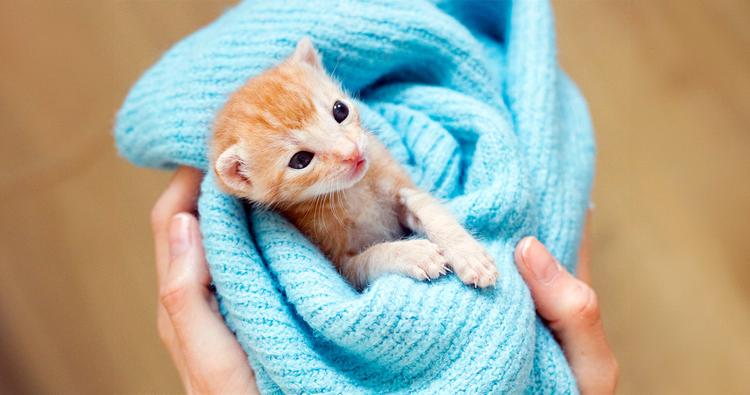Everything You Need to Know About Cat Shelter Volunteering
Once you know what to expect, spending your spare time caring for felines can be the best decision you’ve ever made.
Once you know what to expect, spending your spare time caring for felines can be the best decision you’ve ever made.
by Mollie Jackman, | June 27, 2024

Helen Rushbrook / Stocksy
For cat people, there’s no such thing as too much time with felines. Whether you’re looking for a way to help shelters without adopting, meet potential pets for adoption, or just spend time with kitties away from home, cat shelters always need dedicated volunteers. We’ve created a comprehensive guide to what it’s like to be a cat shelter volunteer, from the types of responsibilities to how to get started. Starting a new extracurricular can be hard, but you’ll be prepared for anything you might encounter with this guide.
When you volunteer at a cat shelter (or any pet shelter), you’ll care for cats, help with their socialization, and ensure their temporary home is clean and comfortable so they’re ready to be adopted. The work can be challenging but ultimately fulfilling, requiring patience and a lot of love. Typical day-to-day tasks at a shelter include:
Feeding: Ensuring all cats receive the correct type and amount of food according to their dietary needs
Cleaning litter boxes: Regularly emptying and sanitizing litter boxes to maintain a clean environment for the cats
Cleaning cat rooms and play areas: Sanitizing rooms between cat playtimes or before a new arrival, to help prevent the spreading of diseases, which can be disastrous in a shelter environment
Grooming: Brushing and bathing cats to keep their fur clean and healthy, and treat skin conditions
Socializing: Spending time with the cats, playing with them, and helping them get used to human interaction to improve their adoptability
New animal intake: Helping with medical needs, taking temperatures, and assisting veterinarians with intake exams for new cats — especially during kitten season (a process that often includes naming the new kitties)
Health checks: Observing cats for any signs of illness or distress, and reporting these issues to shelter staff for prompt medical attention
Enrichment activities: Setting up toys, puzzles, and other activities to keep cats mentally and physically active
Laundry and dishes: Washing bedding, towels, and food dishes
Administrative tasks: Assisting with paperwork, updating cat profiles, and helping with adoption applications
Event assistance: Helping organize and run adoption events, fundraisers, and community-outreach programs to support the shelter’s mission.
Cat shelters offer a variety of volunteer roles to match different skills and interests. They may include:
Adoption counselor: You’ll help prospective pet parents find the right cat for their home, whether they’re looking to adopt a working cat or a cuddle buddy. This role involves understanding the cats’ personalities and needs, then matching them with suitable adopters. Attention to detail is key to pets getting matched with the right families.
Care and cleaning: This is one of the most hands-on roles, involving cleaning cages, replenishing food and water, and maintaining the overall cleanliness of the shelter. It’s a great way to get to know a lot of cats and ensure they have a healthy environment.
Photographer: High-quality photos can make a significant difference in getting cats adopted. As a photographer, you’ll capture the best images of the cats to showcase their personalities and help them stand out to potential adopters.
Foster: Fostering a cat involves taking them into your home until they are ready to be adopted. This role is crucial for kittens who need extra care, cats recovering from surgery, or those who need a break from the shelter environment. Costs associated with animal care are typically covered by the shelter — you’re just responsible for transportation and time. And the benefits of fostering pets far outweigh the costs.
Event volunteer: Many shelters host adoption events, fundraisers, and community-outreach programs. Event volunteers help organize and run these events, spreading awareness and encouraging adoptions.
No matter which role(s) you’re interested in, you’ll typically need to follow a similar process to get started, which we explain in detail, below.
Becoming a shelter volunteer for cats is straightforward. It just requires a few steps to ensure a positive experience for both you and the kitties.
Research local shelters: Start by finding a cat shelter near you. Research their ideals and mission statements to ensure it’s a good fit for your values and preferences.
Visit the shelter’s website or location: Most shelters have a volunteer section on their website where you can find information about available roles, requirements, and the application process. If you aren’t comfortable with the online process or can’t find the shelter you want, visit or call their brick-and-mortar location for more information.
Fill out an application: Complete the volunteer application form. This typically includes providing some personal information, your availability, and any relevant experience.
Attend orientation: Many shelters require new volunteers to attend an orientation session to learn about the shelter’s operations, volunteer expectations, and basic cat care.
Training: Depending on the role, you may need to additional training. For example, adoption counselors might need to learn about the shelter’s adoption process and policies.
Before you find the perfect cat-shelter volunteer opportunity, there are usually some requirements you need to meet:
Age: Many shelters require volunteers to be at least 16 or 18 years old. Some may allow younger volunteers if accompanied by an adult.
Time commitment: Shelters often ask for a minimum commitment, such as a few hours per week or a set number of months.
Health and safety: Volunteers should be in good health and able to handle the physical demands of the work. Vaccinations, such as the shot for tetanus, might be recommended.
Ready to start your journey as a cat-shelter volunteer? Visit Adopt a Pet to find shelters near you, and get involved today. Whether you’re looking to provide daily care, foster a cat, or help with adoptions, your time and effort can make a significant difference in the lives of cats in need.
Volunteering at a cat shelter is a fulfilling way to make a positive impact on the lives of cats and your community. From direct care to fostering and beyond, there are many ways to get involved. Remember, every small act of kindness helps these wonderful animals find loving homes.
If you’re thinking about volunteering at a shelter and are worried about your own cats, don’t fret. If your cat is vaccinated, there’s no need to worry. Shelters and rescues make sure their cats are taken care of, including keeping them up to date on vaccines.
Where you take the cat depends on if it has an ear tip or not. When you find a stray cat and spot a tipped ear, that’s a sign that the cat has been through the Trap, Neuter, Return process and is probably a feral or outdoor cat who doesn’t need to be brought anywhere. However, if the cat does not have a tipped ear, visit a veterinarian’s office or your local shelter to check for a microchip to find their pet parent. If you’re unable to locate them, contact rescues near you about their intake process.

Mollie Jackman is a writer, editor, and graduate of Lindenwood University’s MFA in writing. She’s also a pet parent to a goofy big-eared dog and two brown tabby cats, plus a rotating cast of foster animals. When she’s not reading, writing, or picking up strays, she can be found binge-watching arguably terrible reality TV shows and cooking competitions or rolling around the local skating rink in Columbia, Missouri.

Foster & Volunteer

Foster & Volunteer

Foster & Volunteer

Adoption Advice
Life with an FIV+ cat isn’t so different after all

Adoption Advice
The benefits and challenges of adopting an outdoor cat, plus tips to keep them happy and healthy

Adoption Advice
Adopting a new cat? Learn more about how you should introduce your adopted firend to their new home.

Adoption Advice
Here are a few tips to help you pick the right vet.

Adoption Advice
Learn about rescue dog transport — a vital process relocating adoptable pets from overcrowded shelters to areas where they’re eagerly welcomed.

Adoption Advice
Thinking of adopting a cat? Study up and learn more about what to expect with a new cat around the house.